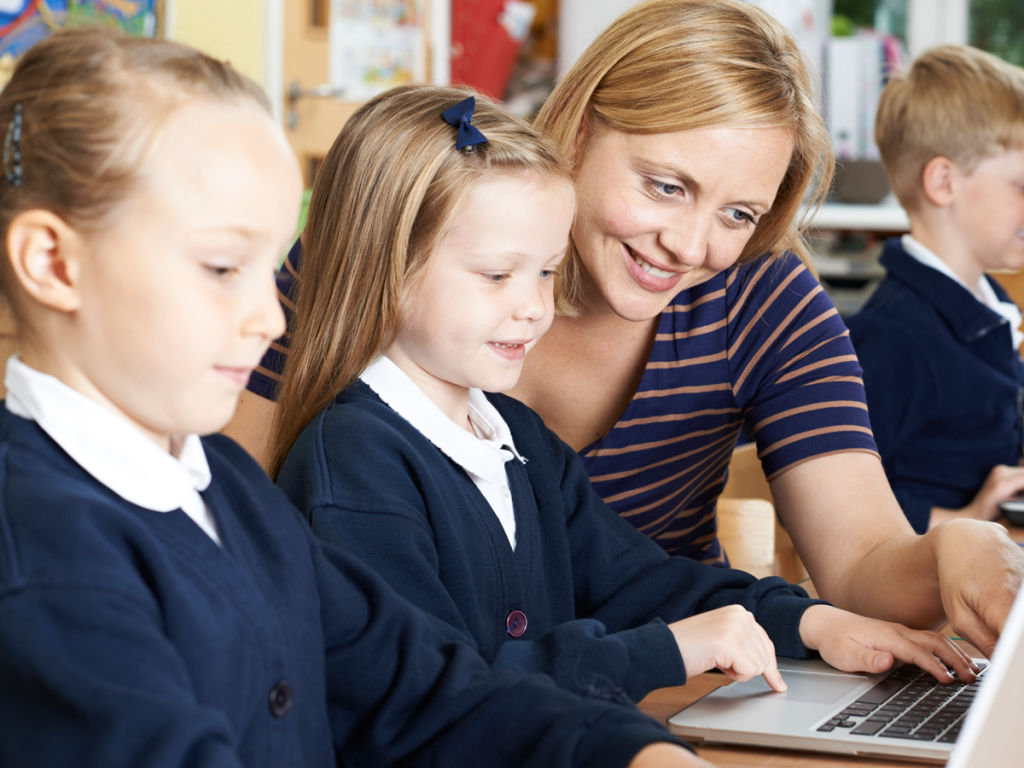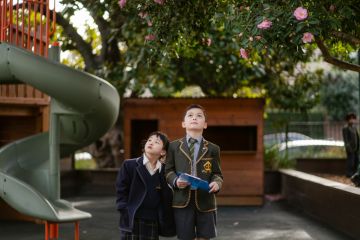Education special feature: preparing for a digital future

Hypersonic. A word meaning “highly supersonic speed” and it’s an apt way to describe the pace at which digital technology has become part of Australian education.
In Melbourne schools, laptops, tablets, smartphones and computers are part of the everyday. And the skills needed to operate and code computer programs, apps and even robots are now being taught to students in primary school.

So it’s no surprise digital technology skills have become a new basic of education, and a major part of the Australian workforce.
Jan Owen, the chief executive officer of the Foundation for Young Australians, says these digital skills work hand-in-hand with other enterprising skills also being taught in schools such as working collaboratively and problem solving.
“Our research says that even in the last three years, don’t even worry about the future, even in the last three years … there’s been a 212 per cent increase in employers asking for people with digital skills, particularly young people,” Owen says.
“It’s a great indicator that we’re already in this [workforce change].” And the change will pose many challenges for schools now and into the future.

Owen says it will be hard to predict how far technology will advance and how it will continue to change the working landscape by 2030, when the current crop of students starting school this year graduate from year 12.
“I think what’s complex about this is that digital skills particularly when you get to STEM (science, technology, engineering and mathematics), are going to continue to transform,” Owen says.
“Everyone is into coding at the moment – but because very soon things will be able to code themselves – for me, I think about the STEM skills as just another way to learn some of these things like critical thinking and problem solving. There’s no doubt that technology skills are fantastic for the period for which they have currency – they will have currency for a while – and we actually have skill shortages in some of these areas at the moment.”
The Knox School in Ringwood in Melbourne’s south eastern suburbs is one of the many schools working to plan for the future state of both education and the workforce.
Principal Allan Shaw says the school’s focus is on “positioning students for success” through not only learning how to be digitally literate but to learn how to be creative, collaborative, critical thinkers who can communicate well.
Using these type of adaptive skills will be of use no matter what the future holds, Shaw says.
“We want them to be creative and very wise users of these things and be leveraging these technologies and outcomes that may well even earn them a living,” Shaw adds.
It’s something many educators, and the FYA’s Jan Owens agree with. “I think it’s important for parents who have got young people in school … to think about how their children are collecting these global enterprising skills through doing coding that will hold them in good stead in the future,” she says.
“It’s not the technical skills, it’s what they’re doing around that, that’s critical.”
Owen says parents wanting to know more about the future of education and the workforce should seek out answers both at their child’s school and online.
“I think number one for parents is just getting information. I think reports like ours and others are really, really important for parents to get their hands on and we make ourselves really accessible,” she says. “Information is power. From there you can make good decisions and have good discussions with your children and young people.” ●
For the Foundation for Young Australians research and reports visit:
We recommend
We thought you might like
States
Capital Cities
Capital Cities - Rentals
Popular Areas
Allhomes
More







